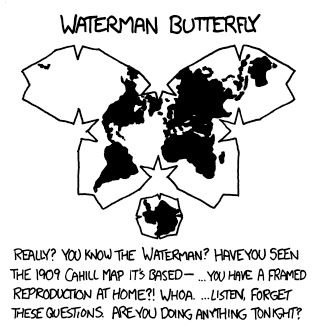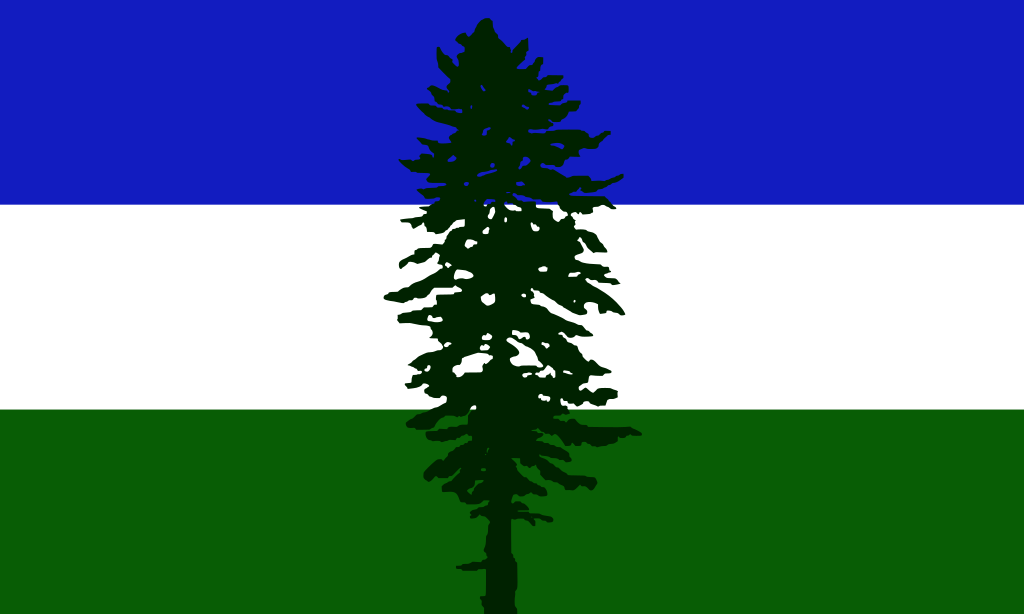I don’t understand this graph. Does it mean directly North? All cities combined? Why isn’t there one city for every longitude?
Edit, nevermind, I got it. It’s by latitude, the next biggest number as it travels south. The title is confusing, though.
Maybe this clarifies for others: there’s no City south of Tokyo with a population bigger than Tokyo. Tokyo and Seoul are the only cities south of NY that have larger populations. And etc.
Excluding southern hémisphère I guess.
Excluding southern hémisphère
No settlement in any hemisphere has a population larger than the Tokyo area’s
Yep makes sense now, I let myself get bamboozled by the logic of this (not about the fact Tokyo is the biggest city).
I’m glad you wrote this because it was exactly what I needed to wrap my head around it too.
I was curious about Alert’s name, and assumed it was because the town served as an alerting system for something, but I looked it up and turns out it’s cause a ship called HMS Alert wintered there.
Also I’ve only ever heard it pronounced the French way: “ah-LAIR”
I wish I knew people who talked about Alert (or Alert as I guess I will now start pronouncing it).
While we’re at it? It’s actually pronounced gif.
Wow that is remarkably disappointing. How could such a savage and uninvited place have such a scary name? By chance, essentially.
Maybe I’m misunderstanding something, but those population numbers seem very wrong. Last I checked, NYC only had about 8.4 million people and Tokyo only 13.9. Does this include the surrounding suburbs?
It’s gotta be including the suburbs, just looked up the population of the NYC metropolitan area and Wikipedia has it around 20 million.
No, the state of new york has ~20m. The city and suburb is closer to london around ~8m. The graphic is wrong
The metropolitan area around New York City includes ares in the states of New York, New Jersey, Connecticut, and Pennsylvania. The best I can tell that’s what this graphic is basing it’s population of NYC on.
Edit: actually I can guarantee is the metropolitan are because Tokyo is the same way. The city has a listed population of 13 million but the metropolitan area is around 40 million, this map shows 37 million.
Oh wow I had no idea it was that built up outside of the city. This must be what Gibson calls the sprawl
Yes. This map says “human settlements”, not “population counts within city limits”. There are various ways to define the borders of an urban settlement, and the numbers represented seem to align with the figures under “urban area” in this list, which is defined within and pulled from this report.
The numbers are close to, but not quite, what Wikipedia has. They’re using 2018 UN estimates, which includes the entire metro area, not just the city proper. I’m assuming OP is using a more recent version of this data, as it’s at least 5 years old at this point.
No clue about Japanese cities, but if you search for an American city’s population you’ll get the metropolitan population, not the greater city’s population. That’s how, according to Wikipedia, Sydney has a similar population to LA, despite LA having 10x the population density. If you include the suburbs LA is an order of magnitude larger than Sydney.
Similar with any UK city other than London and a few small ones, it makes it easy to spot mapmakers who’ve used the metro/borough population based on whether they include Manchester (borough 550k, metro 2.72M), Birmingham (borough 1.15M, metro 2.59M) on their maps… I’ve also seen some include Liverpool though (looking at you hoi4) when it’s smaller than both in all metrics
Oooh, fun. I’d love to see this for south as well, maybe even east and west, ooh and altitude might be interesting too
East and west doesn’t really work. They’re continuous. There is no easternmost point or westernmost point.
South and altitude would be cool though
East and west work fine if you use either the international date line or 180 degrees as the “edge.” Tbh tho, east probs wouldn’t be too interesting, it would just be Tokyo, maybe another coastal asian city, and some islands
You could use 0 and 180 degrees longitude
You could measure relative to the prime or ante meridian.
There is no easternmost point or westernmost point.
Of course there is. Just start walking westwards and when you can’t be bothered anymore that’s the westernmost point you’ve ever walked to.
Who the fuck decide to live in Alert, like that was a reasonable idea
I don’t think anyone chooses to live in Alert. They are assigned 6-month tours of duty there.
At some point someone made a decision that people should live there
It’s a military base. Russian bombers and ICBMs would fly over Alert in order to attack Toronto, therefore someone has to be there. The Arctic is also a contentious area for oil and gas exploration and as a way to bypass the Suez and Panama canals
Somebody should make some rings or maybe one big curvy line that goes through them in succession.
Wouldn’t the title qualify somewhere like Barrow, Alaska for this list? Basically every location with people that is really, really far north?
They changed its name to Utqiagvik in 2016
They’re not as far north as Tiksi, Russia, which has over a hundred more inhabitants
I’m confused about what this map is actually saying. This is basically just the max population city on any given long. But that’s the other thing, what’s the east west cutoff? There’s multiple settlements from Russia, so it’s not per country. Lots of those settlements are much closer together to each other than say, new York and Seattle or LA or whatever it would end up being. What’s the margin of degrees on east west?
Best I can tell, the data set must have been “we picked some random recognizable and unheard of settlements and called it good.”
Also the geographic north pole isn’t marked on the map, which adds to the confusion. The lat/long don’t even go to the north pole, or anywhere close to it! That’s arguably the most important reference point of the axes…
Maybe someone who understands the map better can explain it better, but from the information I can see it makes no sense and doesn’t seem to tell me anything.
deleted by creator
They’re all smaller* than the next northernmost on the chart.
Tokyo is 35 North and new York is 40 North - there’s no European city larger than new York between those latitudes.
Next is new York (40 North) and Moscow (55 North). There’s no European city that is larger than Moscow between those bounds.
But it depends on what you define as the boundary of the settlement for population purposes. You might include Istanbul (41 North) there if you define population differently. This list has Istanbul in front of Moscow population wise.
Helsinki should be on the chart though as it has a greatdr population than Arkhangelsk (674,963) and lies further north than Saint Petersburgh (60° 10′ 15″ N, SP: 59° 56′ 15″ N)
deleted by creator
Probably cause there’s no bigger cities to the south of NYC. I haven’t checked but it seems true.
There are no cities in the US west of New York?
Not a lot of US cities north of New York, and the ones that are are less populous than northern Eurasian cities









